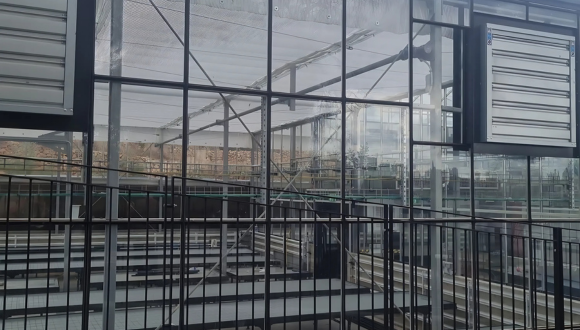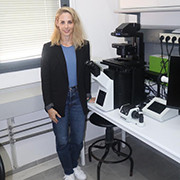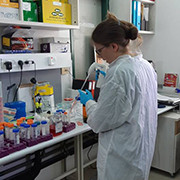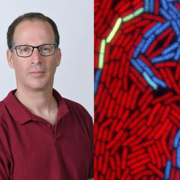Beyond the Botanical Garden, Something New Awaits
The School of Plant Sciences and Food Security has created innovative, cutting-edge greenhouses for research, with the goal of generating the next generation of plants
In a bird’s-eye view from the urban skyscrapers, hidden in the depths of Tel Aviv University, there’s a place that holds a lot of excitement for Israeli nature lovers, whether students or the general public - the Yehuda Naftali Botanical Garden, located in a short walking distance from the Steinhardt Museum of Natural History.
The garden, founded in 1973, contains approximately 3,800 plant types scattered across 34,000 square meters. Among the many flora, with some of which have unique and exotic names, there are trees, cacti and even oversized coconuts and mushrooms. These days, the botanical garden is revealing its crown jewel - high tech, state of the art greenhouses developed and geared for prolonged research. Even before the researchers set foot in the still-under construction facilities, the greenhouses are classified as an integral and essential component of the university’s tapestry.
"This greenhouse is without a doubt the most advanced in Tel Aviv University, and possibly among the most sophisticated in Israeli universities"
Prof. Amir Sharon, Head of the School of Plant Sciences and Food Security, and Dr. Nir Sade, a senior lecturer at the same institution, designed the research greenhouses. According to the latter, the concept originally emerged six years ago, long before it was planned and approved. "We began it in 2018, while I was working on my post-doctorate with the late Prof. Hillel Fromm, who was the Head of the Department of Plant Sciences at the time. Once I arrived here, it began to take shape through Guido (the late Prof. Guido Sessa, former Head of the School of Plant Sciences and Food Security), Amir, and Yehuda Naftali's donation to the Botanical Garden."
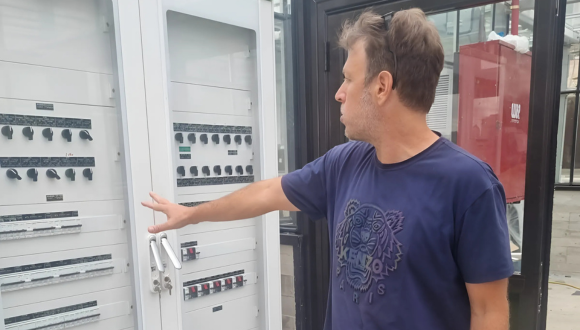
The greenhouses are intended to provide a comprehensive approach to the School of Plant Sciences and Food Security’s innovative research and studies, which in recent years earned national and worldwide acclaim. Among the notable findings are those of Prof. Eilon Shani, who was awarded a Synergy Grant from the European Research Council (ERC) in 2023 for his research on how plants react to water stress; Prof. Roy Weinstain, who led a research team for eight years that resulted in a significant breakthrough in plant genetic improvement, leading to more effective plant growth regulation; or rather Prof. Yasmin Meroz’s research on the dance-like movement of sunflowers.
The aforementioned studies demonstrate the various facets of innovation that will be addressed at the greenhouses. “They integrate with other abilities we’ve established, whether the transformation center for plants or the metabolomics center for plants - they all provide us with integrative capability to conduct research on all disciplinary fields,” Prof. Amir says as he tours the facilities with Dr. Sade. “It’s part of a complex that should provide us with the most advanced science for plants, resulting in better and more efficient plants that can grow in dry conditions and produce more food. The goal is to generate the next generation of plants.” Dr. Sade stated that "the greenhouse is already in its final building phase and is currently ready. We completed the last system testing, and we believe that after the holidays, the greenhouses will be operational, and visitors will be able to view plants growing."
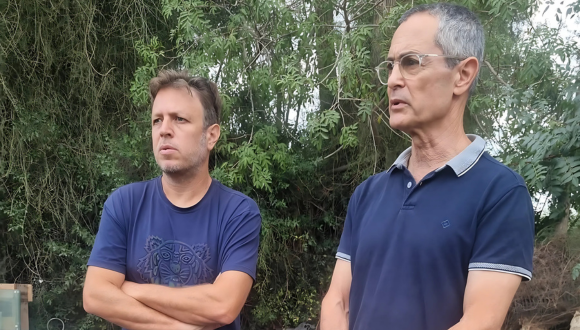
An extensive tour led by Dr. Sade reveals the facilities that will house the greenhouses, which include water and controlling systems for the many plants expected to grow within their respective units, multiple labs, and a large room that can hold up to 2,000 plants at once, with temperatures controlled efficiently. Alternatively, the facility's shade net opens and closes based on the current temperature, which is a significant component of the greenhouses' innovation. "The goal is to grow plants in semi-field conditions," Dr. Sade explains. "As Amir mentioned, we have a transformation center where we create a large number of genetically altered plants. Regulations make it difficult to bring these plants out for real field testing.”
According to Dr. Sade, the greenhouses’ ultimate goal is “to create science at the highest level, but with an applied value, producing agricultural products - improving agriculture to meet the requirements it needs today, particularly for Israel. This greenhouse is without a doubt the most advanced in Tel Aviv University, and possibly among the most sophisticated in Israeli universities, according to those who built it and others who visited, including Weizmann Institute guests.” Prof. Amir concludes, "I believe it can compete with any advanced facility in the world. We have a limited amount of space here, right? However, I feel the technology introduced here is of the highest standard."


